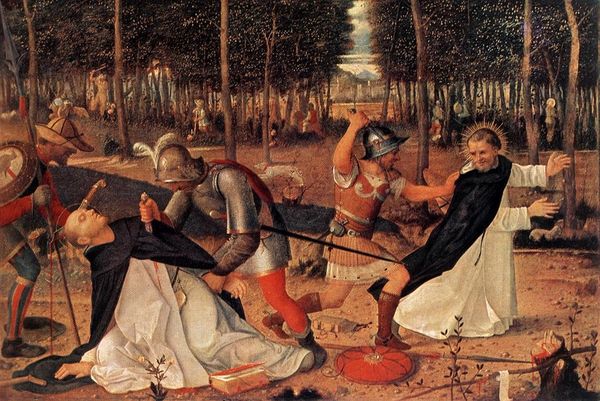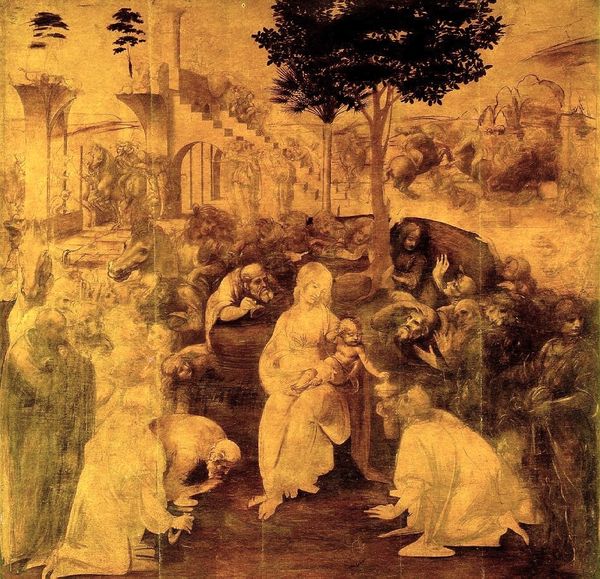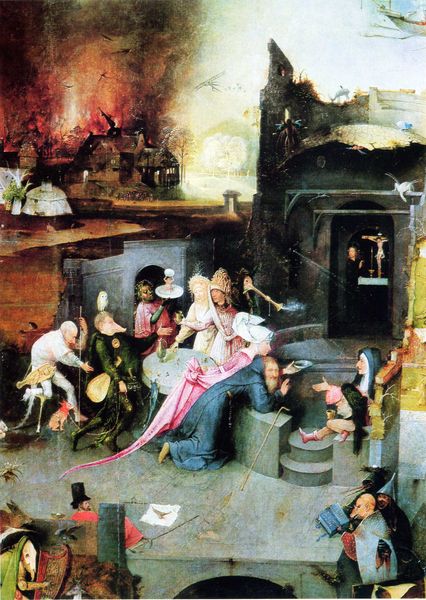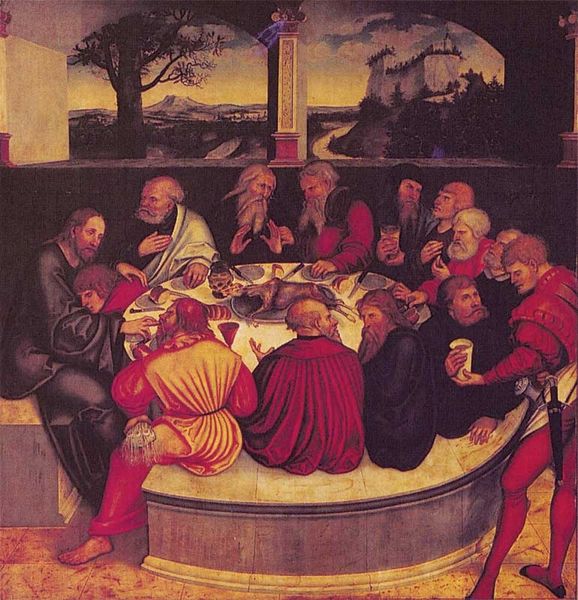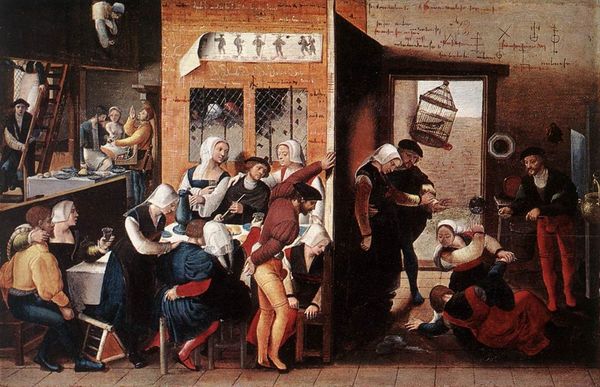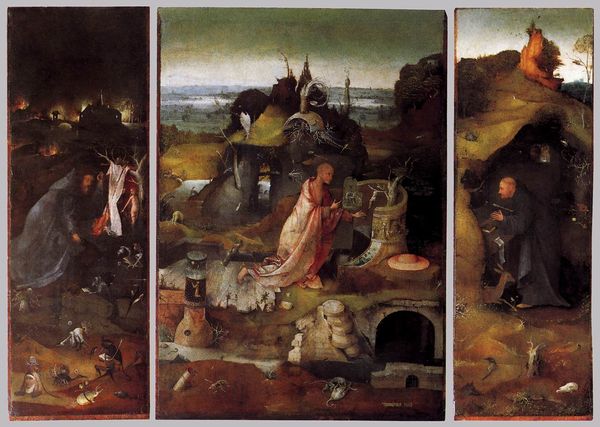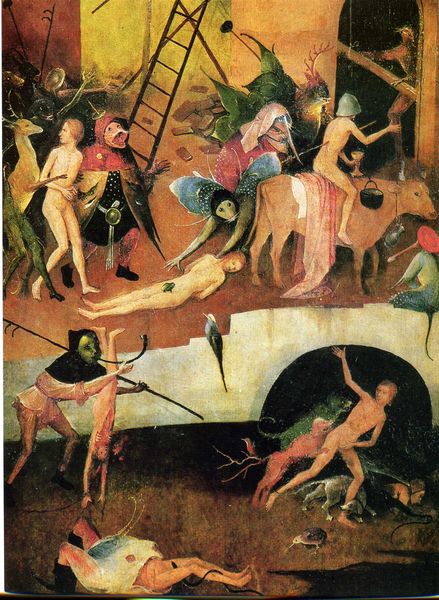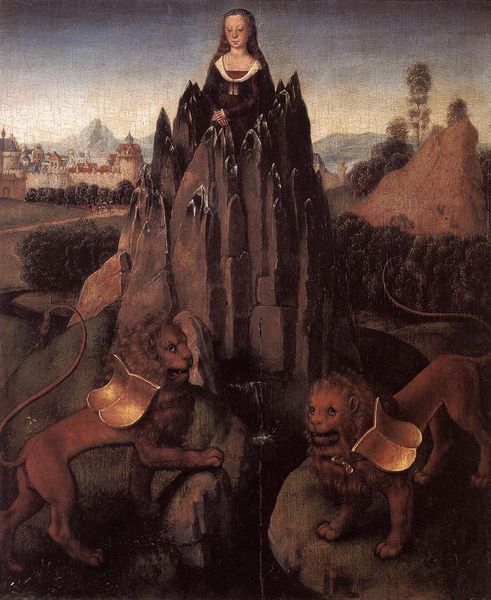
Allegory of Gluttony and Lust 1500
0:00
0:00
hieronymusbosch
Yale University Art Gallery (Yale University), New Haven, CT, US
Dimensions: 34.9 x 31.4 cm
Copyright: Public domain
Editor: Hieronymus Bosch’s oil painting, "Allegory of Gluttony and Lust," dates back to 1500. Its composition strikes me as simultaneously grotesque and comical. So much is happening; what draws your eye, and what sense do you make of it? Curator: The chaotic imagery really typifies Bosch. Paintings like this, overflowing with bizarre details, actually served a critical public function back then. Think about the social climate. The Church held immense power. Bosch’s exaggerated depictions of sin – gluttony and lust, here – acted as warnings. Can you see how the scene, even in its strangeness, critiques societal excesses? Editor: So, it's social commentary disguised as something almost fantastical? Is that why the figures are so outlandish, like caricatures? Curator: Precisely! Look at the character on the barrel – an overflowing vessel. What kind of message do you think that sends in this context, to his audience? Editor: An impactful and immediate message I presume. I guess it makes sense, communicating morals in this way when many people wouldn’t be literate. Also, is it a coincidence that he depicts these "sins" in what appears to be an affluent setting? Curator: Not at all. That’s precisely what gives this painting its power. He’s not just showing us sin, he’s highlighting where he saw it thriving and how this undermined religious teaching: amidst wealth and complacency. It also suggests that worldly pleasures have consequences. Editor: I see now, it is much more than a bizarre scene. I will have to research more about this context! Thank you. Curator: My pleasure! Examining the political and cultural backdrop of artworks always provides deeper layers of meaning, doesn’t it?
Comments
No comments
Be the first to comment and join the conversation on the ultimate creative platform.
